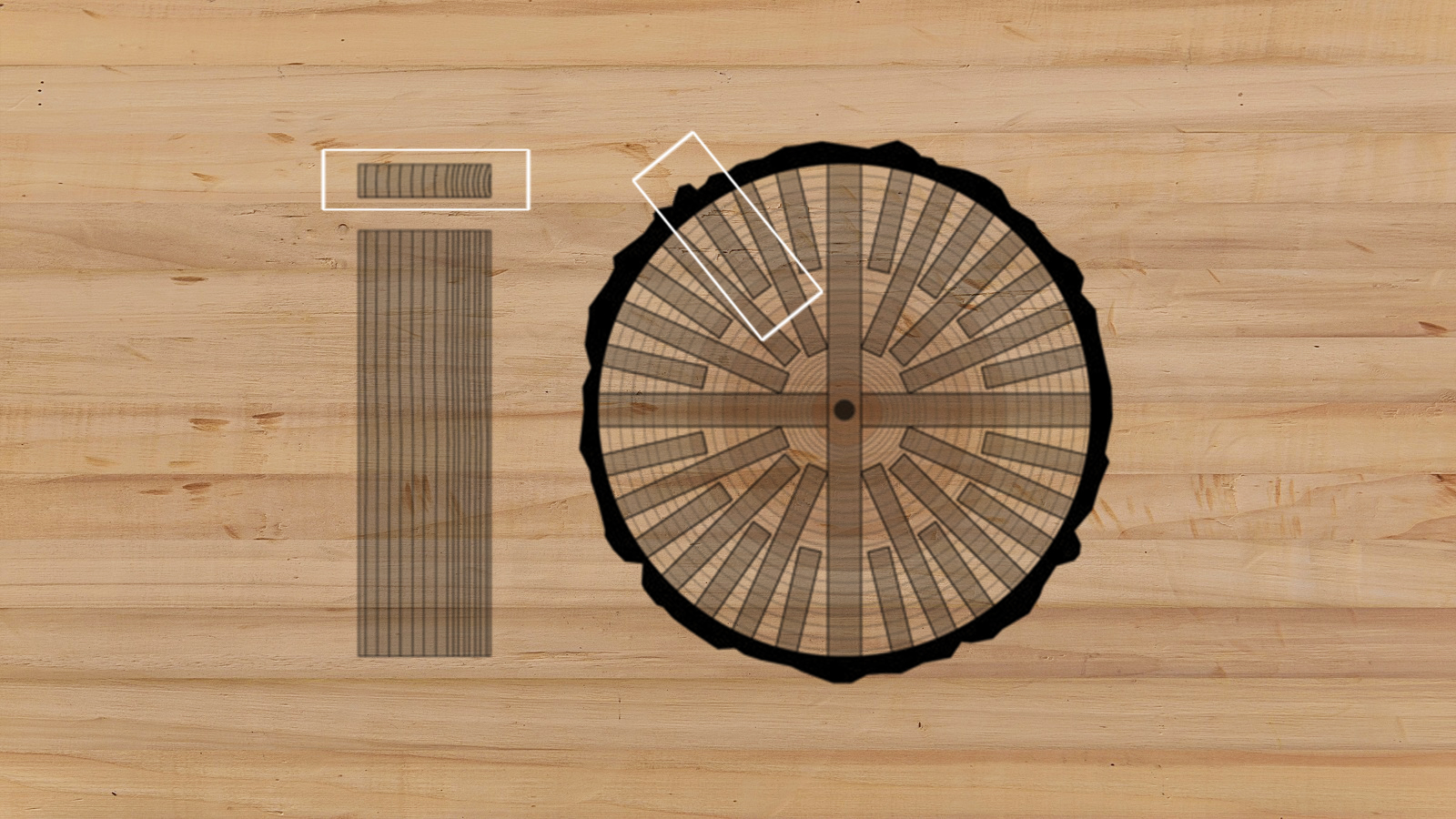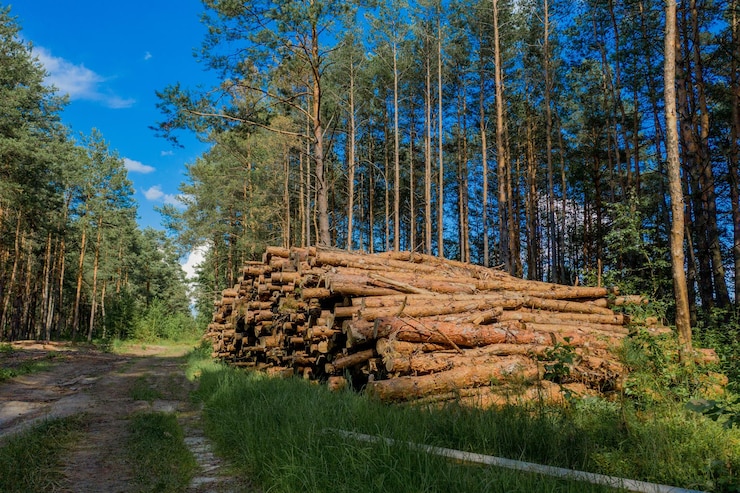Timber has some unique characteristics that make it as versatile as it is valuable: it’s strong yet flexible and is great for thermal and acoustic isolation. But we must remember that it comes from a living source and, for that reason, it is not a uniform material.
When the tree is in the process of growing, rings form in its trunk, each of which represents one year of life. If the tree grows in a fertile and damp place, it will develop more quickly. If it grows in a dry place, it will grow more slowly. These environmental conditions can have an impact on the appearance and hardness of the wood, even resulting in differences between trees of the same species. The slower the tree’s growth, the closer the rings will be to each other, the harder the wood will be.
There are many different processes when it comes to felling a tree. Solid wood can be cut in parallel with the length of the trunk, which is the fastest and most common method and which allows you to see the knots (spots that were once the base of a branch) as well as pattern and colour variations. However, there are other ways to cut wood. A radial cut can be made in parallel with the longitudinal axis of the trunk, perpendicular to the rings. The resulting texture and colour are more uniform and there is very little warping.

But there are many different variations, including other, more specific cuts such as the Cantibay method, which uses straight lines to form triangles and does not use the centre or the edge of the trunk, resulting in a very precise cut and flawless piece. Then there is the Dutchman, a cross shape that divides the wood into quadrants with the goal of obtaining as much wood as possible.
The world of knots
No matter the cut, one of the most important aspects to consider is making sure that the resulting material has as few imperfections as possible. The aforementioned knots are one of the most common “imperfections” (although they are not always seen as such). They appear after the wood is cut into planks as irregular circles on the grain of the material. They aren’t all the same, but they can be characterised using three different qualities: state, size, and form.
When it comes to their state, there are two possibilities: sound or unsound. The former is fine to have as long as it isn’t on a joint or a visible surface. But a dead knot can be a huge problem as they detach from planks and make it more likely that holes will appear.
In order to measure the size of the knot, defined measurements are used. A bird’s eye knot is less than five millimetres; a small knot would be between five and fifteen; and more than twenty millimetres is a medium-sized knot. If it’s more than forty millimetres in diameter, it’s classified as a big knot. However, the size and the state are not related; a rotted knot could be tiny or huge,, depending on when the branch was cut.
When it comes to form, we have to go back to how the wood was cut, which will determine its morphology. For example, if a tangential cut was used, the knot will be round, whereas a radial cut will leave a spike-like knot.
Ver esta publicación en Instagram
Logging is better in the cold
As we already mentioned, choosing the time of year in which to fell a tree is no small thing because wood is an organic material. Generally, its best to log during the cold months i.e., autumn and winter, because that’s when wood ‘hibernates’. It’s all about the substances inside the wood, namely the sap. When it gets hotter, the sap flows freely inside the trunk, making the tree damper in spring and summer which makes this the best time for the wood to grow and develop in the most favourable conditions. If something interrupts this ‘watering’ process, the wood might discolour or attract fungi. As we know, dampness is the enemy of wood and so, the less we risk exposing the material to it, the better.
For some species, especially those with light-coloured wood, such as white beech and pine, felling the tree at the right time of year is a must. If pine’s natural lifecycle is not respected, for example, it may take on a blue tinge. Almost any type of wood will discolour if its cut during the summer months because its life cycle was interrupted, which is why if you’re planning to use timber in a project during the northern hemisphere’s summer (i.e., from May to September), it’s recommended that you use stocks from the winter.
In order for the elegance and beauty of timber to meet our expectations, we must take great care throughout the whole process that unfolds between the tree’s growth and how it is treated, as well as pay attention to the logging conditions and methods. We should also remember its circumstances and that it is an organic material, meaning that working with it requires a clean, refined, and respectful approach. If we do this, we ensure that it will arrive at the spaces it’s to be used in in the best possible condition.

Did you know any of these fun facts about logging? Tell us what you knew on social media using #ConnectionsByFinsa.




